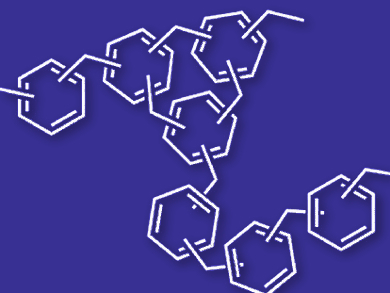Porous carbons are materials that are simple to prepare from a variety of natural and synthetic precursors. They have high specific surface areas and pore volumes, and are promising for applications in, e.g., gas separation, water purification, catalysis, and energy storage.
Andrew I. Cooper and colleagues, University of Liverpool, UK, have carbonized hypercrosslinked polymers (HCPs) to make highly porous carbons with good properties for CO2 and H2 adsorption. The team used a Friedel–Crafts alkylation with formaldehyde dimethyl acetal to crosslink benzene, thiophene, and pyrrole, respectively, and prepare the corresponding HCPs. Then the polymers were carbonized by mixing them with KOH and heating the mixtures to 700–1000 °C.
The resulting materials are mesoporous and have surface areas as high as 4334 m2 g−1. The morphology of the polymer precursors is mostly retained in the porous carbons. The materials show excellent uptake of CO2 and H2, with higher capacities than the uncarbonized precursors. According to the researchers, the approach could be extended to other aromatic monomers and possibly lead to a wide range of useful carbonized materials.
- Hyperporous Carbons from Hypercrosslinked Polymers,
Jet-Sing M. Lee, Michael E. Briggs, Tom Hasell, Andrew I. Cooper,
Adv. Mater. 2016.
DOI: 10.1002/adma.201603051




